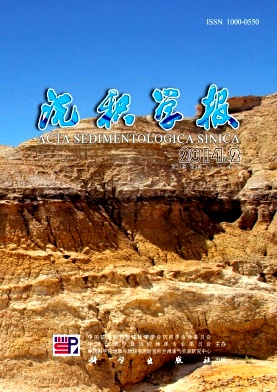Sr-Nd Isotopic Compositions of the Upper Yangtze River Sediments: Implications for Tracing Sediment Sources
- Publish Date: 2014-04-10
-
Key words:
- the Yangtze River /
- the upper drainage basin /
- Sr-Nd isotopes /
- provenance /
Abstract: The Yangtze River is one of the major rivers in the world. Originating from the Tibetan Plateau, the river flows eastward across the three major topographic levels. Its drainage covers more than one- fifth of the continental area of China before finally entering the East China Sea. The huge Yangtze drainage basin is more than 6300 km in length and has a catchment area of 1.8×106km2. It is located between 24°27′~35°44′ N and 90°33′~122°19′ E. The Yangtze drainage basin spans the regional structure of China with three-grade relief and can be divided into three parts, the upper, middle and lower reaches. Although study of the evolution of the Yangtze River has a long history of more than 100 years, it is still controversial. Previous studies proposed that the Yangtze River can be dated back to the Cretaceous or the early Tertiary, the early Quaternary or the late Pleistocene. The source to sink process of the modern river sediments played a fundamental role in the research of the evolution of the Yangtze River. Sediments of the modern Yangtze River were mostly derived from the upper Yangtze drainage basin. Therefore, the erosion process of sediments from the upper Yangtze River played an important role in the erosion process of sediments from the whole river drainage system. The Sr-Nd isotopes have been proved to be rarely influenced by weathering, sediment transport and deposition process, especially the Nd isotope. We have reported the geochemical and Neodymium isotopic compositions of the late Cenozoic sediments in the Jianghan Basin to decipher information on the changing provenance and provide more constraints on the evolution of the Yangtze River. In this study, the fine-grained samples were collected from the main stream and tributaries (the Jinshajiang River, the Minjiang River and the Jialingjiang River) of the upper Yangtze River for Sr-Nd isotopic measurements. The results revealed that samples collected from the Jinshajiang River and the Minjiang River show high εNd(0) values. Although the source rocks in the Yangtze drainage basin are complicated including Archean metamorphic rocks, Paleozoic carbonate and sedimentary rocks, Mesozoic-Cenozoic igneous and clastic rocks, and Quaternary detrital sediments. It indicates that the influence of the large Emeishan Basalt Province is widely distributed in the upper Yangtze River valley in the Yunnan and Sichuan provinces. During the humid and warm climate, it undergoes rapid chemical weathering and the higher εNd(0) values could dominate the Nd isotopic compositions of the Yangtze River sediments. Samples from the Jianglingjiang River sediments show much lower εNd(0) values, indicating that the average Nd isotopic values of the source rocks in the Jialingjiang valley is much lower. Compared with Nd, the Sr isotopic values show a wider range, indicating that the Sr isotopic sediments of sediments are affected by much more complicated factors. In order to better understand how the modern Yangtze River generated sediments, we also collected the SrNd isotopic values reported by other researchers. The results have revealed that sediments from the main stream can be divided into two parts. One part of the sediments is characterized by high εNd (0) values and low 87Sr/86Sr values. The other part of the sediments is characterized by low εNd(0) values and high 87Sr/86Sr values. However, we find that both of these sediments were located in the same area with the samples collected from the Jinshajiang River (No matter from this study or previous studies). It indicates that these sediments were mainly derived from source rocks distributed in the Jinshajiang valley. The influence of the sediments from the Jialingjiang River could be excluded. However, this was not consistent with the information provided by the Changjiang (the Yangtze River) Sediment Bulletin that the Jialingjiang River is an important sediment supplier to the mainstream.
| Citation: | Sr-Nd Isotopic Compositions of the Upper Yangtze River Sediments: Implications for Tracing Sediment Sources[J]. Acta Sedimentologica Sinica, 2014, 32(2): 290-295. |






 DownLoad:
DownLoad: